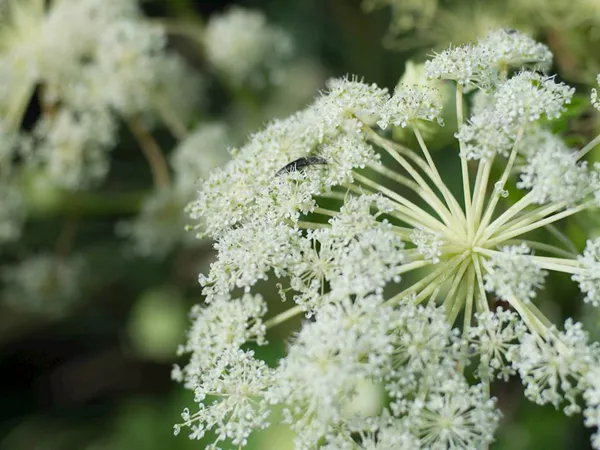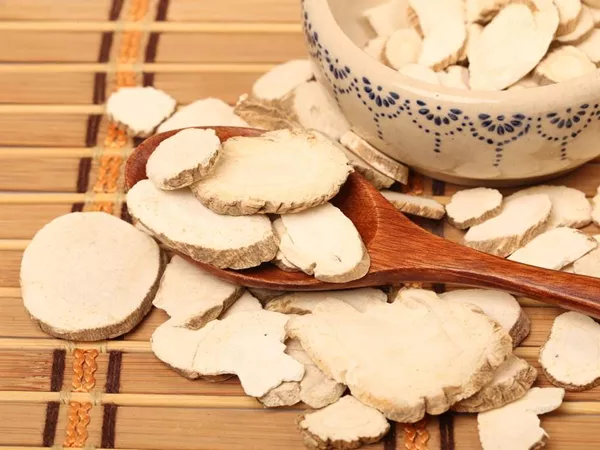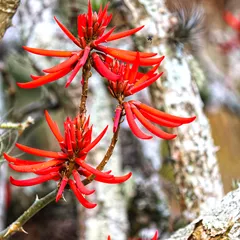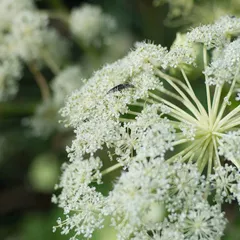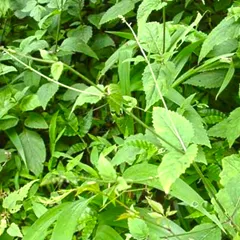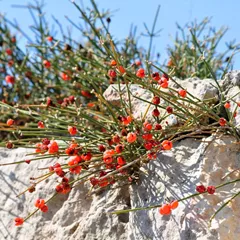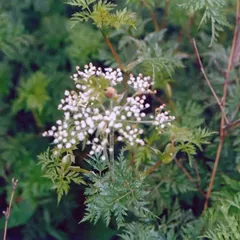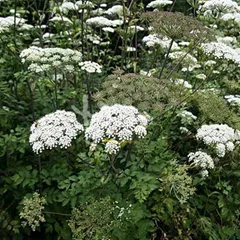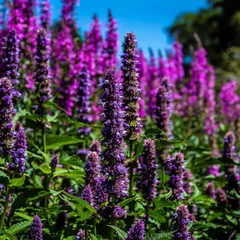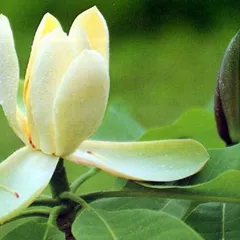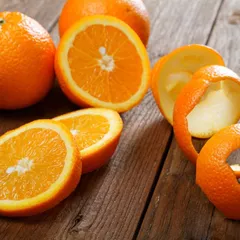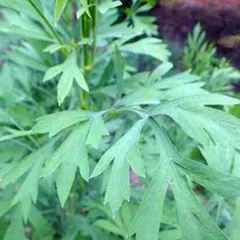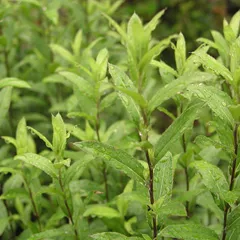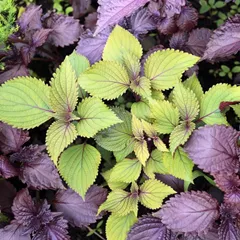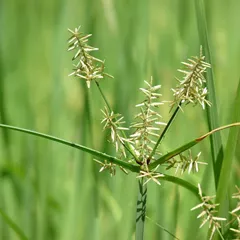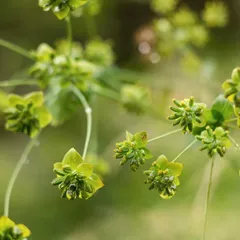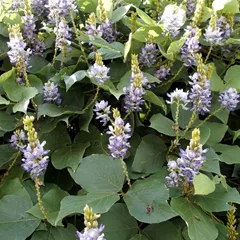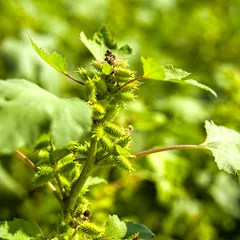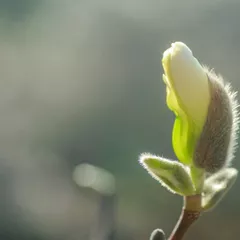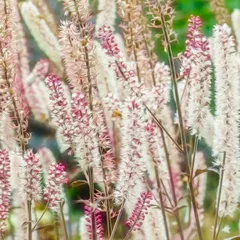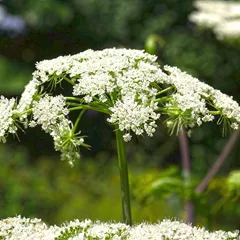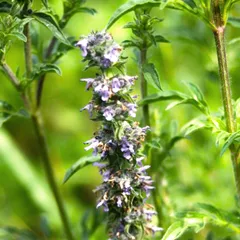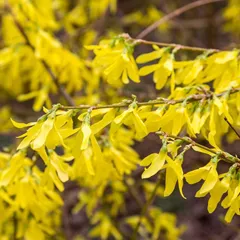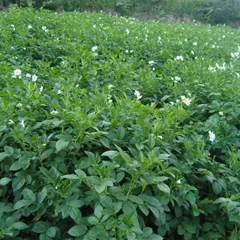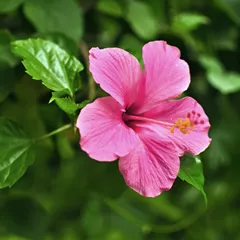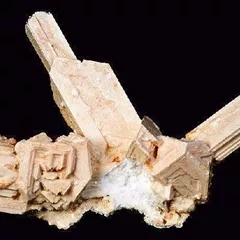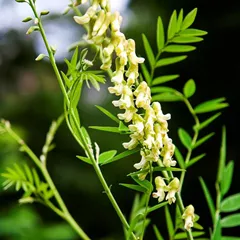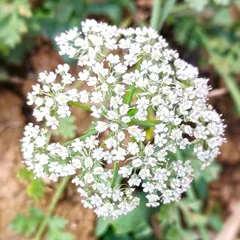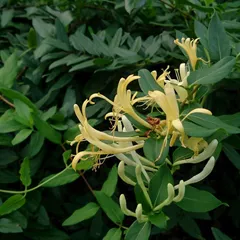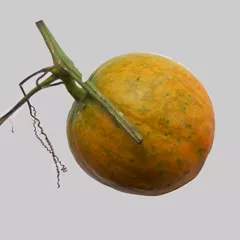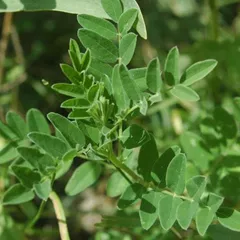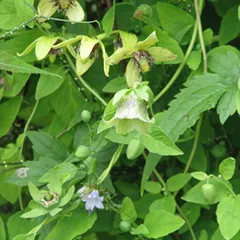Bai Zhi
Bai Zhi
English: Angelica roots
Chinese: 白芷
Use of Bai Zhi (angelica roots) in TCM
Please note that you should never self-prescribe TCM ingredients. A TCM ingredient is almost never eaten on its own but as part of a formula containing several ingredients that act together. Please consult a professional TCM practitioner, they will be best able to guide you.
Preparation: Remove impurities, wash with water, slice and dry.
Dosage: 3 - 10g
Main actions according to TCM*: Relieves the Exterior and disperses Wind. Disperses Wind and Cold from the Yang Brightness channels. Relieves Wind-Damp Cold painful obstruction. Dries Dampness and pus and reduces swelling. Opens the nasal passages.
Primary conditions or symptoms for which Bai Zhi may be prescribed by TCM doctors*: Common cold Headache Sinusitis Leukorrhalgia Mastitis Toothache Leukorrhea
Contraindications*: Should not be used by those with Yin or Blood Deficiency
Common TCM formulas in which Bai Zhi is used*
Hai Tong Pi Tang
Source date: 1742 AD
Number of ingredients: 12 herbs
Formula key actions: Invigorates the Blood. Disperses swelling. Dispels Wind, Dampness and Cold. Removes Stagnation and relieves pain.
Conditions targeted*: Trauma and others
Bai Zhi is a king ingredient in Hai Tong Pi Tang. Like the name indicates, it means it has more power than other ingredients in the formula.
In Hai Tong Pi Tang, Bai Zhi unblocks the Channels, invigorates the collaterals, dispel Dampness, and relieves pain.
Erythrinae bark, Garden Balsam, Clematis root, Angelica root, Saposhnikovia root and Sichuan pepper shares similar functions.
Wu Ji San
Source date: 846 AD
Number of ingredients: 15 herbs
Formula key actions: Releases the Exterior. Warms the Interior. Smoothes the flow of Qi. Transforms Phlegm. Invigorates the Blood. Reduces Stagnation.
Conditions targeted*: BronchiolitisSciatica and others
Bai Zhi is a king ingredient in Wu Ji San. Like the name indicates, it means it has more power than other ingredients in the formula.
In Wu Ji San, Bai Zhi release Cold from the Exterior.
The four key herbs in the formula work together to addresses Cold Evil in both the Exterior and Interior.
Chuan Xiong Cha Tiao San
Source date: 1107
Number of ingredients: 9 herbs
Formula key actions: Disperses Wind. Removes pain .
Conditions targeted*: Upper respiratory tract infectionsMigraine headache and others
Bai Zhi is a king ingredient in Chuan Xiong Cha Tiao San. Like the name indicates, it means it has more power than other ingredients in the formula.
In Chuan Xiong Cha Tiao San, Bai Zhi alleviates headaches along the Yang Brightness Channel.
Notopterygium root also alleviates headaches but along the Greater Yang Channel around occipital.
Szechuan lovage root is along the Lesser Yang and Terminal Yin Channels around temporal and vertex.
All these three are King herbs of the formula, and they treat headache in
any part of the head.
If the pain is localized, the dosage of the corresponding herb can be increased accordingly.
Huo Xiang Zheng Qi San
Source date: 1107 AD
Number of ingredients: 11 herbs
Formula key actions: Releases the Exterior. Transforms Dampness. Regulates Qi. Harmonizes the Middle Burner.
Conditions targeted*: GastroenteritisStomach flu and others
Bai Zhi is a deputy ingredient in Huo Xiang Zheng Qi San. This means it helps the king ingredient(s) treat the main pattern or it serves to treat a coexisting pattern.
In Huo Xiang Zheng Qi San, Bai Zhi is very effective in treating headaches.
Jiu Wei Qiang Huo Tang
Source date: 1308 AD
Number of ingredients: 9 herbs
Formula key actions: Induces sweating . Dispels Dampness. Expels Wind-Cold. Clears Interior Heat .
Conditions targeted*: Common coldMigraine and others
Bai Zhi is a deputy ingredient in Jiu Wei Qiang Huo Tang. This means it helps the king ingredient(s) treat the main pattern or it serves to treat a coexisting pattern.
In Jiu Wei Qiang Huo Tang, Bai Zhi assists the key herb in releasing the Exterior. It also relives headache and body pain.
Shi Shen Tang
Source date: 1107 AD
Number of ingredients: 11 herbs
Formula key actions: Releases pathogens from the Exterior . Regulates Qi . Descends the Lung Qi . Relieves coughing .
Conditions targeted*: Common coldInfluenza and others
Bai Zhi is a deputy ingredient in Shi Shen Tang. This means it helps the king ingredient(s) treat the main pattern or it serves to treat a coexisting pattern.
In Shi Shen Tang, Bai Zhi work together with the ascending herbs, Kudzu root and Bugbane rhizome, to treat Wind-Cold headache and nasal congestion.
Chai Ge Jie Ji Tang
Source date: 1445 AD
Number of ingredients: 11 herbs
Formula key actions: Releases pathogenic evils from the muscle layer . Clears Interior Heat .
Conditions targeted*: Common coldInfluenza and others
Bai Zhi is a deputy ingredient in Chai Ge Jie Ji Tang. This means it helps the king ingredient(s) treat the main pattern or it serves to treat a coexisting pattern.
In Chai Ge Jie Ji Tang, Bai Zhi , together with Notopterygium root, helps the key herbs to release the Exterior and alleviate pain.
Both herbs enter into the Greater Yang and Yang Brightness Channels and thereby assist in focusing the formula on this territory.
Cang Er Zi San
Source date: 1253
Number of ingredients: 5 herbs
Formula key actions: Disperses Wind. Relieves pain. Unblocks the nose.
Conditions targeted*: Acute sinusitisChronic sinusitis and others
Bai Zhi is a deputy ingredient in Cang Er Zi San. This means it helps the king ingredient(s) treat the main pattern or it serves to treat a coexisting pattern.
In Cang Er Zi San, Bai Zhi is acrid, warming, and aromatic. It releases the Exterior and opens up the orifices, disperses Wind-Damp, and
promotes the discharge of pus.
Xin Yi San
Source date: 1253 AD
Number of ingredients: 9 herbs
Formula key actions: Disperses Wind-Cold. Unblocks the nasal passages.
Conditions targeted*: Nasal congestionAllergic rhinitis and others
Bai Zhi is a deputy ingredient in Xin Yi San. This means it helps the king ingredient(s) treat the main pattern or it serves to treat a coexisting pattern.
In Xin Yi San, Bai Zhi relieves the Exterior and disperses Wind. It disperses Wind and Cold from the Yang Brightness Channels.
It also relieves Wind-Damp Cold painful obstruction, dries Dampness and pus and reduces swelling. Finally, it opens the nasal passages.
Shu Jing Huo Xue Tang
Source date: 1587 AD
Number of ingredients: 16 herbs
Formula key actions: Expels Wind Damp from the Channels. Invigorates Blood. Unblocks the channels.
Conditions targeted*: ArthralgiaBell's palsy and others
Bai Zhi is an assistant ingredient in Shu Jing Huo Xue Tang. This means that it either serves to reinforces the effect of other ingredients or it moderates their toxicity.
In Shu Jing Huo Xue Tang, Bai Zhi disperses Wind Cold from the Yang Brightness Channels. It also relieves pain and swelling due to Cold invading the Channels and Joints.
Jing Jie Lian Qiao Tang
Source date: 1773 AD
Number of ingredients: 12 herbs
Formula key actions: Dispels Wind. Clears toxic-Heat. Disperses Stagnation.
Conditions targeted*: RhinitisTonsillitis and others
Bai Zhi is an assistant ingredient in Jing Jie Lian Qiao Tang. This means that it either serves to reinforces the effect of other ingredients or it moderates their toxicity.
In Jing Jie Lian Qiao Tang, Bai Zhi disperses accumulations and also thrusts out pus.
Er Qing Gao
Source date: 1617 AD
Number of ingredients: 11 herbs
Formula key actions: Clears Toxic-Heat. Disperses swelling. Relieves pain.
Conditions targeted*: BoilsCarbuncles and others
Bai Zhi is an assistant ingredient in Er Qing Gao. This means that it either serves to reinforces the effect of other ingredients or it moderates their toxicity.
In Er Qing Gao, Bai Zhi treats abscesses by dispersing clumping and swelling and thrusting out pus.
Together with other assistant herbs, it addresses stasis, clumps, swelling, and pain. When Heat is cleared and the Toxicity is resolved, the swelling is dispersed, and the pain is relieved.
Ku Shen Tang
Source date: 1806 AD
Number of ingredients: 8 herbs
Formula key actions: Dispels Wind. Dries Dampness. Kills parasites. Relieves itching.
Conditions targeted*: Atopic dermatitisSeborrheic dermatitis and others
Bai Zhi is an assistant ingredient in Ku Shen Tang. This means that it either serves to reinforces the effect of other ingredients or it moderates their toxicity.
In Ku Shen Tang, Bai Zhi reduces swelling, clears toxin and disperses pus.
Gua Lou San
Source date: 1826 AD
Number of ingredients: 8 herbs
Formula key actions: Remove breast carbuncle (mastitis) after birth giving.
In Gua Lou San, Bai Zhi expels pus
Tuo Li Xiao Du San
Source date: 1548 AD
Number of ingredients: 11 herbs
Formula key actions: Draws out toxicity. Expels pus from the interior. Tonifies Qi and Blood.
In Tuo Li Xiao Du San, Bai Zhi opens the orifices and helps to resolve Toxin
Key TCM concepts behind Bai Zhi's properties
In Traditional Chinese Medicine (TCM), Bai Zhi belongs to the 'Warm/Acrid herbs that release the Exterior' category. Herbs that release the Exterior aim to to treat the early stages of diseases that affect the upper respiratory tract, the eyes, the ears, the nose, the throat or the skin. TCM believes that External diseases such as colds or allergies can only invade the body if the External environment overwhelms our Wei Qi (the TCM version of the immune system). In order to counteract this invasion Warm/Acrid herbs aim to induce sweating by increasing the flow of sweat to our capillary pores. The belief is that this will expel the disease from the body and stop it from invading further.
As suggested by its category Bai Zhi is Warm in nature. This means that Bai Zhi tends to help people who have too much 'Cold' in their body, although with less effect than a plant that would be Hot in nature. Balance between Yin and Yang is a key health concept in TCM. Those who have too much Cold in their body are said to either have a Yin Excess (because Yin is Cold in nature) or a Yang Deficiency (Yang is Hot in Nature). Depending on your condition Bai Zhi can help restore a harmonious balance between Yin and Yang.
Bai Zhi also tastes Pungent. The so-called 'Five Phases' theory in Chinese Medicine states that the taste of TCM ingredients is a key determinant of their action in the body. Pungent ingredients like Bai Zhi tends to promote the circulations of Qi and Body Fluids. That's why for instance someone tends to sweat a lot when they eat spicy/pungent food.
The tastes of ingredients in TCM also determine what Organs and Meridians they target. As such Bai Zhi is thought to target the Spleen, the Stomach and the Lung. In TCM the Spleen assists with digestion, Blood coagulation and Fluids metabolism in the body. The Stomach on the other hand is responsible for receiving and ripening ingested food and fluids. It is also tasked with descending the digested elements downwards to the Small Intestine. In addition to performing respiration, the Lungs are thought in TCM to be a key part of the production chain for Qi and the Body Fluids that nourish the body.
Research on Bai Zhi
Angelica dahurica may have a potential clinical value for treating mild to moderate pains1
Angelica dahurica has anti-staphylococcal properties and may be used for the treatment of some infections.2
Sources:
1. Yuan CS, Mehendale SR, Wang CZ, Aung HH, Jiang T, Guan X, Shoyama Y. (2004). Effects of Corydalis yanhusuo and Angelicae dahuricae on cold pressor-induced pain in humans: a controlled trial. J Clin Pharmacol. , 44(11):1323-7.
2. D Lechner, M Stavri, M Oluwatuyi, R Pereda-Miranda et al. (2004). The anti-staphylococcal activity of Angelica dahurica (Bai Zhi). Phytochemistry, 2004 - Elsevier
Use of Bai Zhi as food
Bai Zhi is also eaten as food. It is used as an ingredient in dishes such as Candied angelica or Angelica jam.

